Baby Carrier Fit Check
Troubleshooting
Carrier feeling a little uncomfortable? Here are quick troubleshoots to check the fit of your carrier.
Adjustments for you

Waist Band
To alleviate lower back pain and shoulder discomfort while babywearing, it’s important to ensure that the waistband of your carrier is snug and parallel to your waist/hips.
When the carrier dips in the front, it can put added pressure on your back and shoulders, making the carry uncomfortable. A properly fitted waistband can distribute the weight of the baby evenly and shift the load from your shoulders to your hips, reducing strain on your back.
You can experiment with adjusting the tightness of the waistband to find the perfect fit for your body.
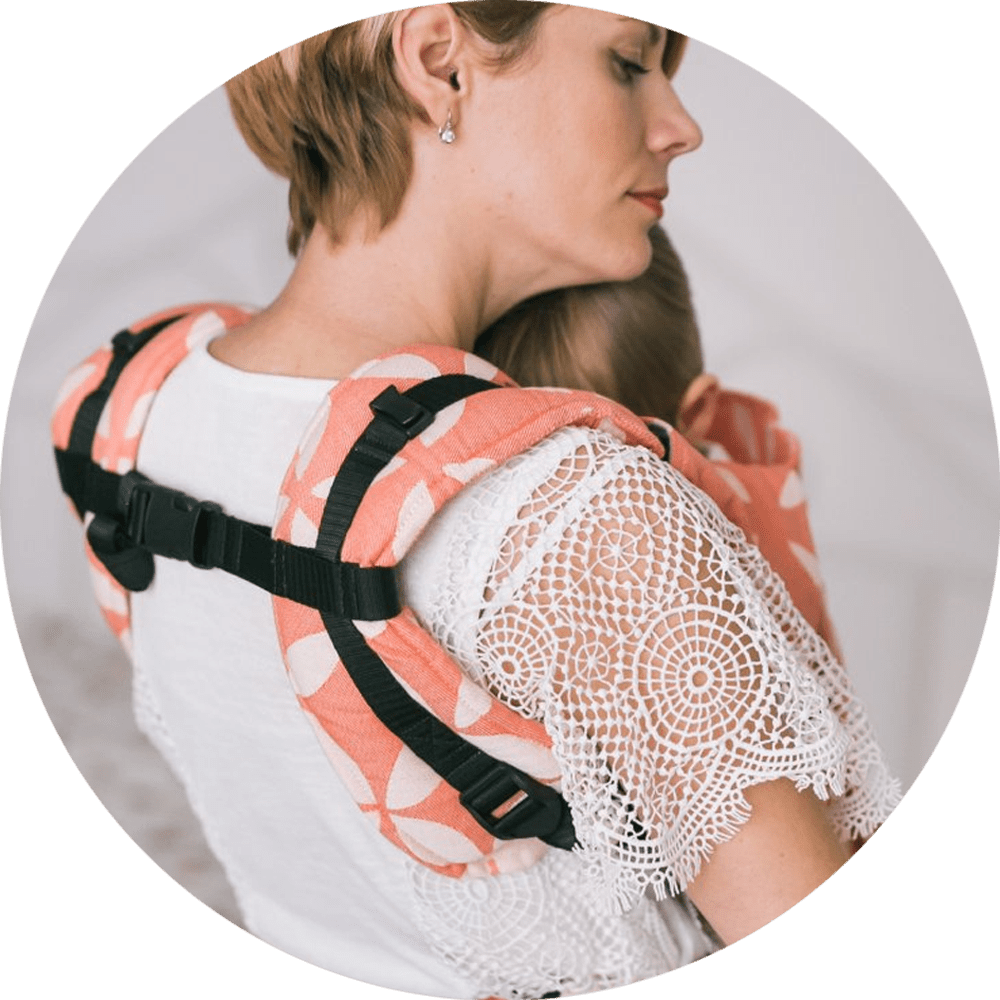
Chest Clip
If you experience shoulder pain, discomfort between your shoulder blades, or if the carrier straps are rubbing under your arms or slipping off your shoulders, it’s important to adjust the chest clip.
Locate the adjusters on either side of the straps and slide them up or down until you find a comfortable position. A properly adjusted chest clip should form the shape of an “H” on your body, with the shoulder straps as the vertical lines and the chest clip as the horizontal line.
By adjusting the chest clip, you can evenly distribute your baby’s weight across your body, preventing discomfort and strain on your shoulders or lower back. Remember to adjust the chest clip’s position when switching between a front and back carry to ensure optimal comfort and support for both you and your baby.
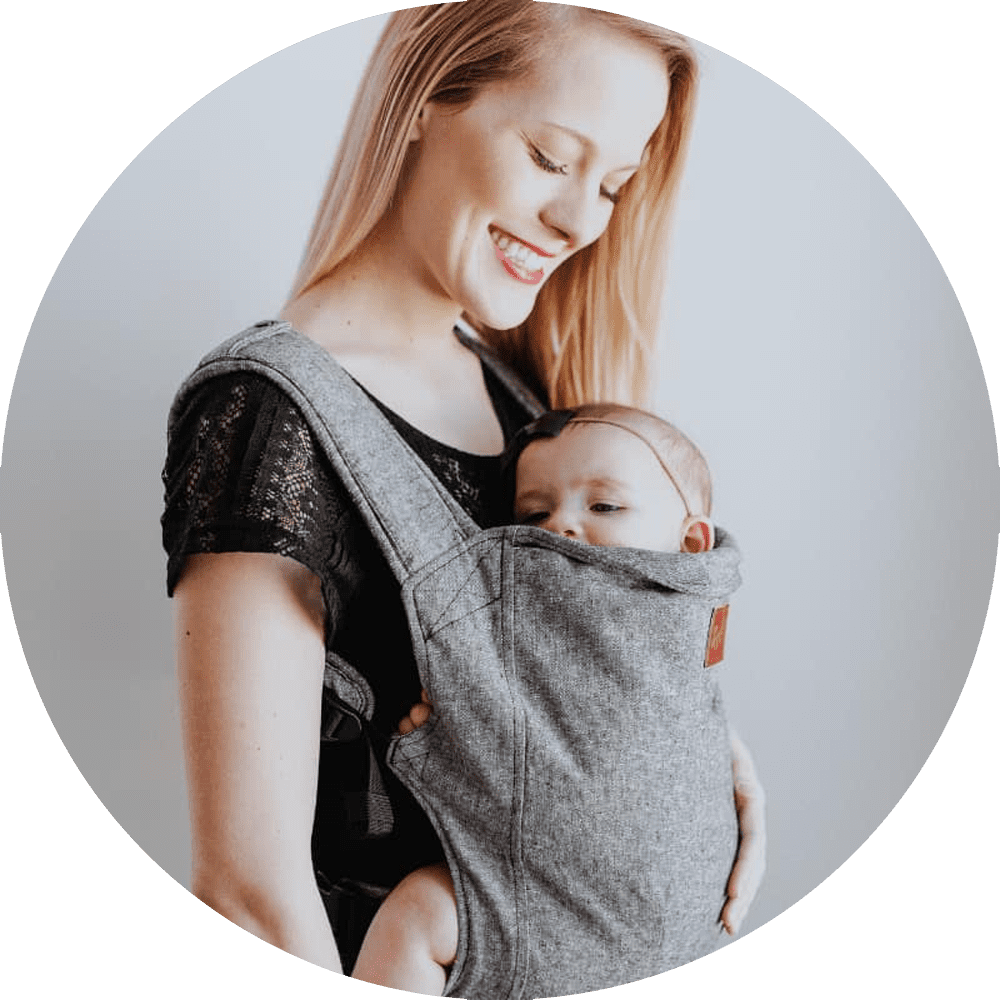
Carrier Position
If you feel the carrier pulling on your lower back region, it could be an indication that your baby is positioned too low on your body. To fix this, try adjusting the height of the waistband and ensure your baby is in the ‘kissable’ zone, where you can easily and comfortably kiss the top of their head.
A low baby position can put extra strain on your lower back and cause discomfort during prolonged carrying periods. Raising the waistband and adjusting the baby’s position can help distribute the weight more evenly and alleviate any discomfort.
Take time to adjust the carrier to find the right position and tightness for you and your baby.
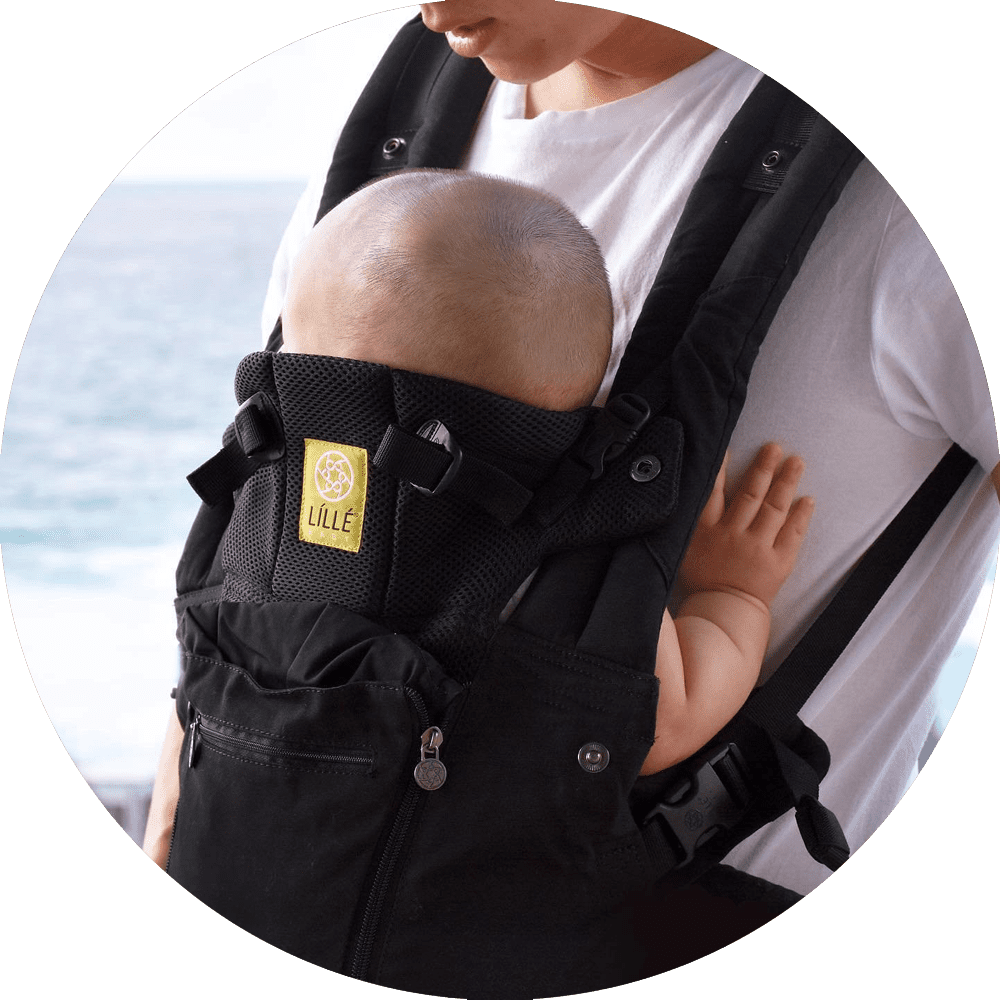
Arm Straps
Improperly adjusted Soft Structured Carrier straps can cause discomfort, leading to issues such as neck ache, tension headaches, back ache, or uncomfortable chafing. To prevent this, make sure the straps are completely on your shoulders and have a nice tension. Avoid overtightening or making them too loose.
If the straps are too loose, your baby won’t feel secure and well-supported, and they may even cry due to a lack of security. Additionally, this can make your baby feel heavier for the wearer.
Conversely, if the straps are too tight, they can rub under your arms and cause discomfort, while also pressing your baby too close to your chest, making it difficult to achieve the natural ‘C’ curve spine.
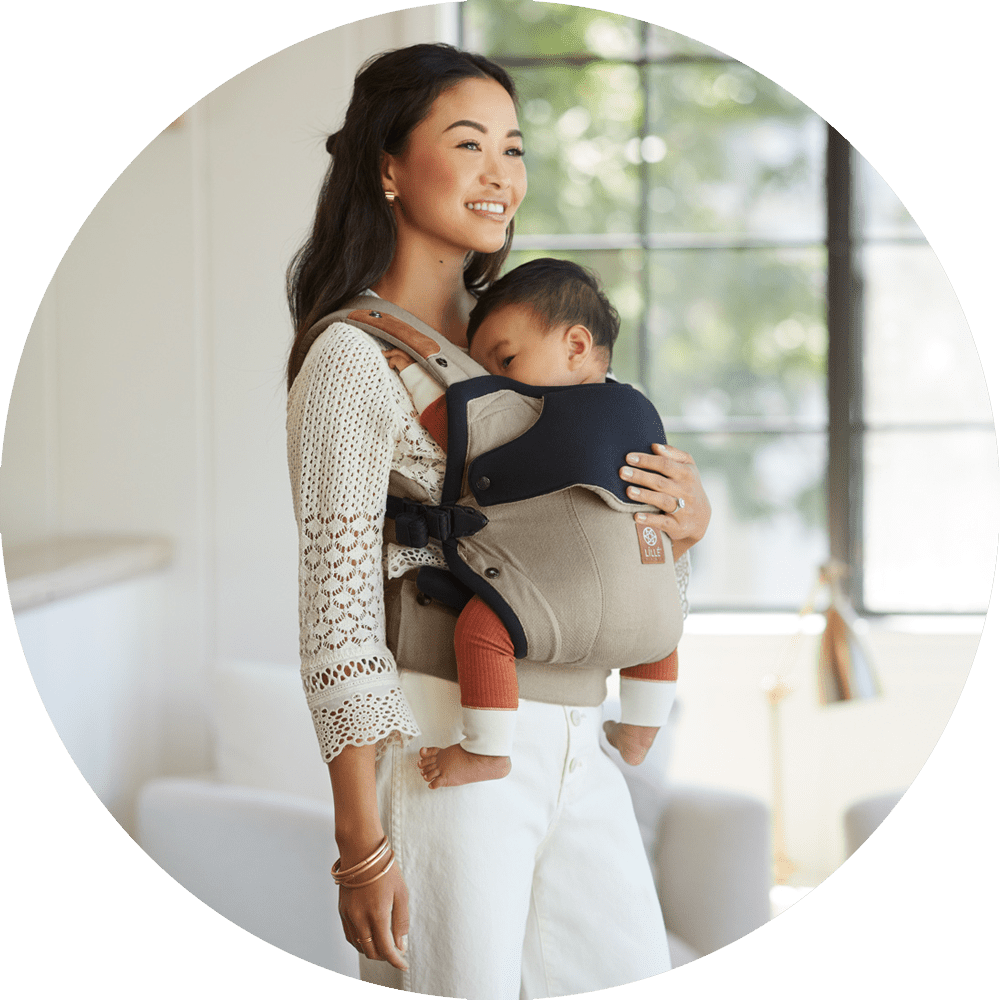
Perfect Your Posture
Carrying a baby can cause discomfort, which is often related to our posture and alignment. Improving your posture is crucial for a comfortable carrying experience and overall wellbeing.
Poor posture, such as standing with a forward slump or rounded shoulders, or hanging your head forward, can throw off your center of gravity. This can lead to strain on your body, even if your carrier is well-adjusted.
Adjustments for your baby
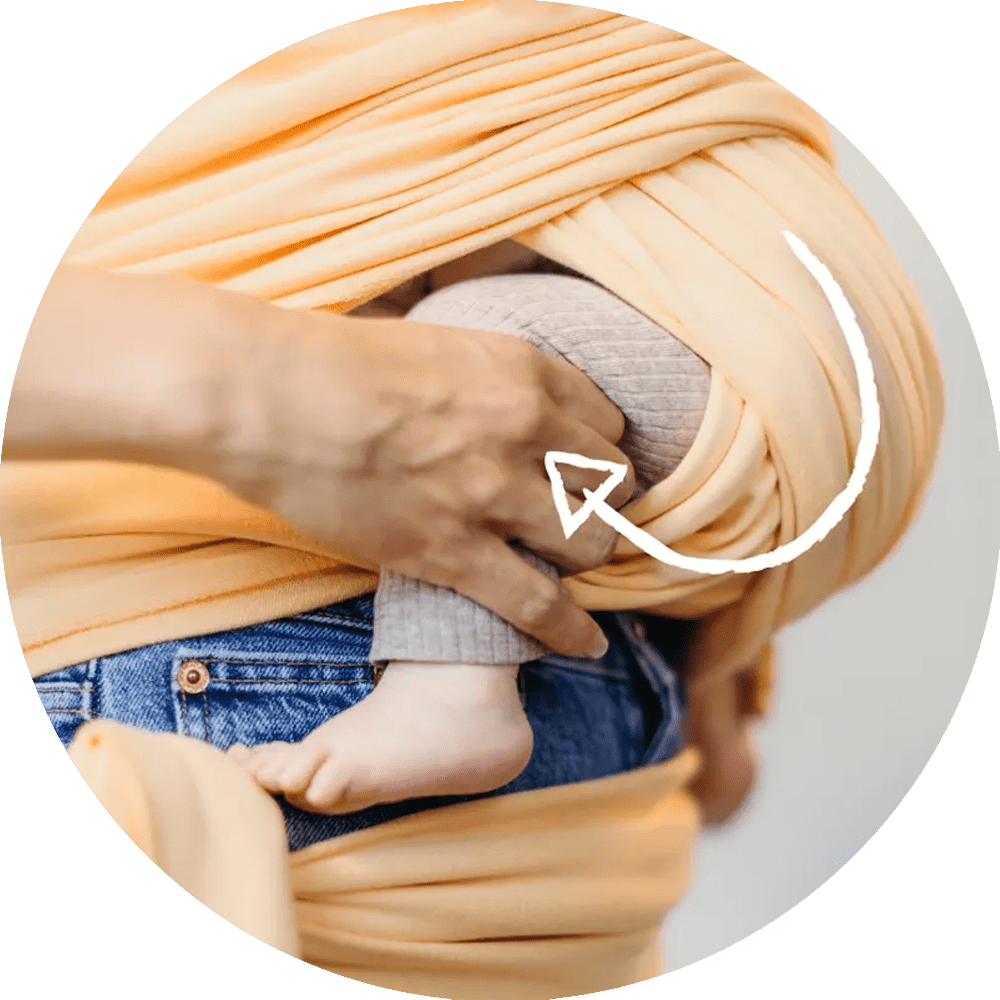
Pelvic Tuck
To achieve a comfortable and secure position for your baby in a carrier, you may need to perform a pelvic tuck. This technique involves gently tilting your baby’s pelvis forward to create a deep seated position in the carrier.
Start by holding your baby’s legs under the knee pits and gently scooping them towards your body in an upward motion. This movement will tilt your baby’s pelvis forward and create a more ergonomic seated position.
As you perform the pelvic tuck, make sure your baby is fully supported with the carrier or wrap extending from knee pit to knee pit and across their back up to their neck. This will help distribute their weight evenly and prevent strain on their hips or spine.
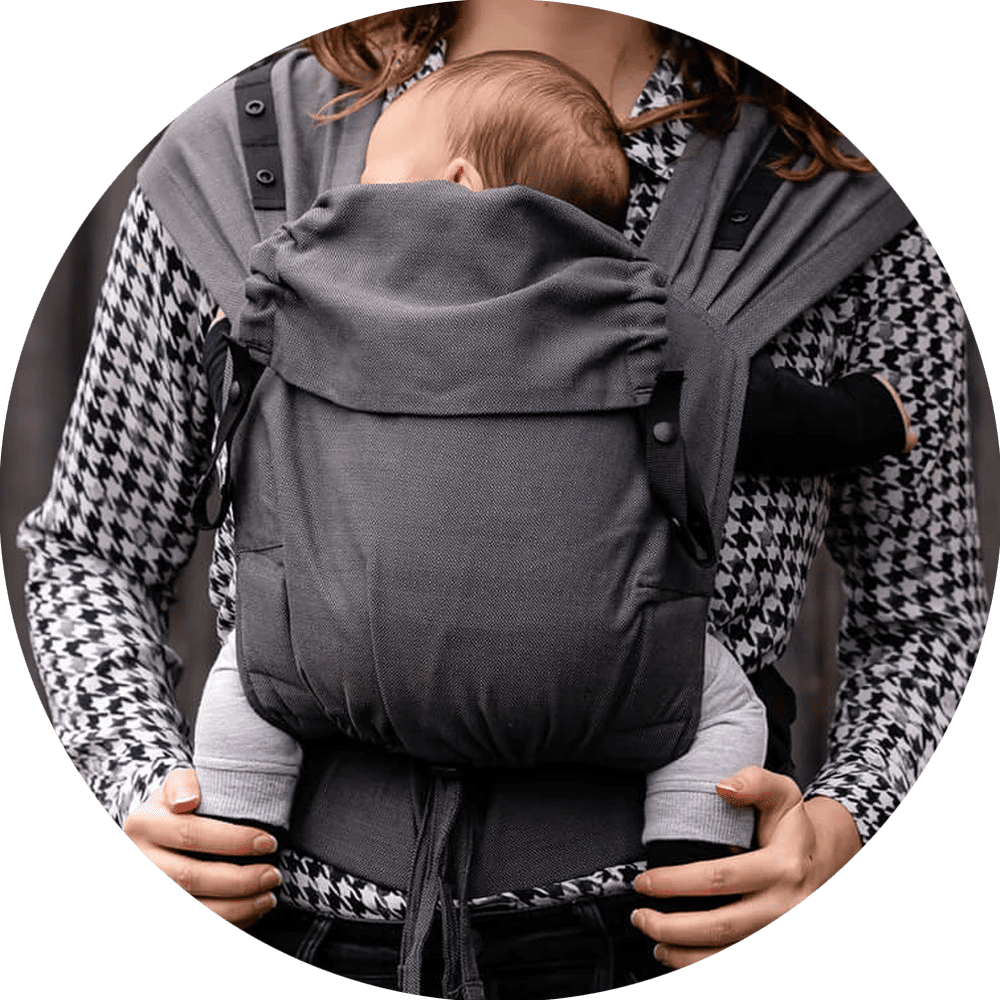
Knee to Knee
The ideal position for your baby is called ‘Knee to Knee.’ This ensures that the carrier supports your child across the full width of both thighs, from one knee to the other, reaching into the knee pit, offering a comfortable seat, like sitting in a hammock rather than on a narrow ledge.
If unsure about the fit, check in the mirror for proper leg position. While a too-narrow is not the best practice for ‘healthy hips,’ and is not considered harmful, it may not provide the needed security, causing discomfort like wriggling or crying. Additionally, it can result in red marks on the inside of their thighs.
To fix this issue, adjust the carrier seat wider for more support. Refer to your carrier’s manual for specific adjustments.
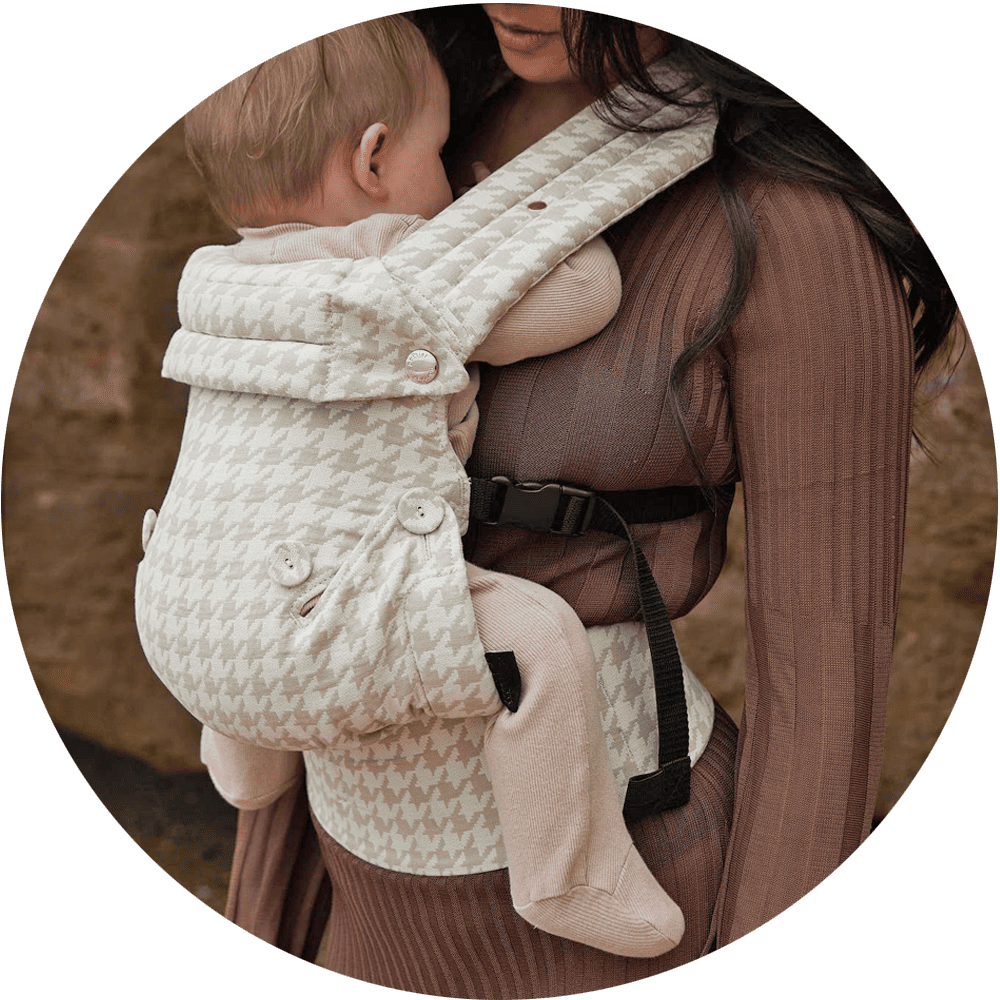
Check Tiny Toes
While footed onesies are ideal for keeping baby toes warm, they may cause discomfort when worn in a baby carrier. As your baby sits in the carrier, their clothing can naturally rise and create tension on their toes.
Wearing a footed onesie or zip suit can lead to issues like restricted movement, compromised blood flow, and upward pulling of the toes. This can strain the plantar muscle on the sole of the foot and trigger a reflex for standing, causing discomfort for your baby while in the carrier.
To avoid this, when placing your baby in the carrier, gently pull the fabric of the onesie away from their toes. If you can’t achieve a loose fit, consider moving up to the next clothing size.
Common Babywearing Mistakes
Below are some examples of common mistakes that are made when babywearing and how to correct them. It is important to know that with a few simple adjustments, you can change the whole fit and feel of your carrier yourself.

Stretchy Wrap
Left: The passes of fabric have not been spread across babies back enough which will not be offering baby enough neck and head support. This wearer may also feel more comfortable if they spread the fabric furth across their shoulders.
Right: By making sure the fabric passes are spread well across baby’s back as well as the wearer’s shoulders, it has been possible for baby’s head to be cradled comfortably on the wearer’s chest. Baby’s back and neck are well supported.
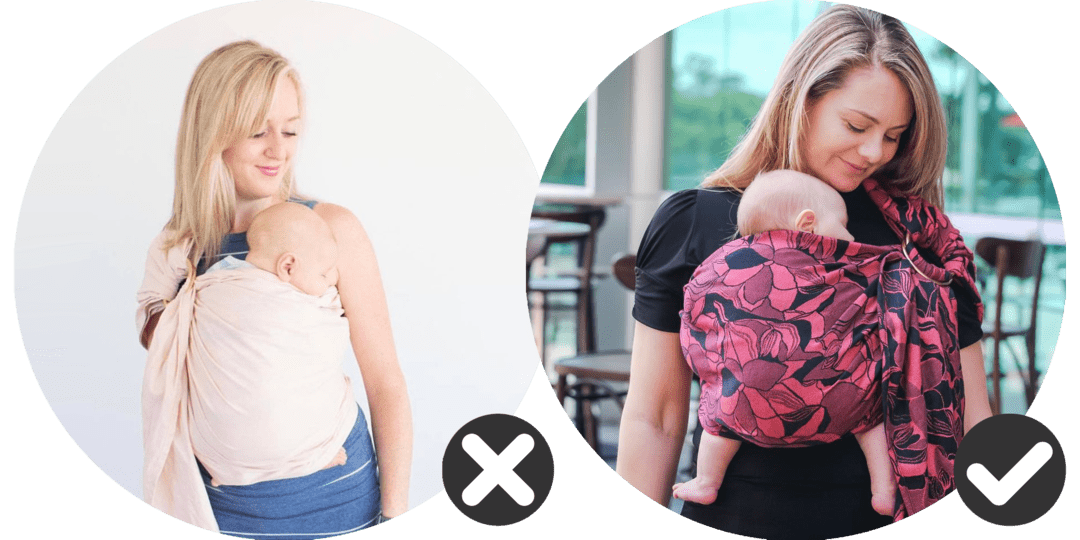
Ring Sling
Left: The bottom of the ring sling fabric is too loose and there is not a seat for baby’s bottom to rest on. This is causing baby to sit askew without a supported back.
Right: By making sure the ring sling fabric is spread from knee to knee and is pulled tightly, baby’s bottom is hammocked in the carrier helping them to rest and sit comfortably on the wearer’s chest with a supported back and neck.
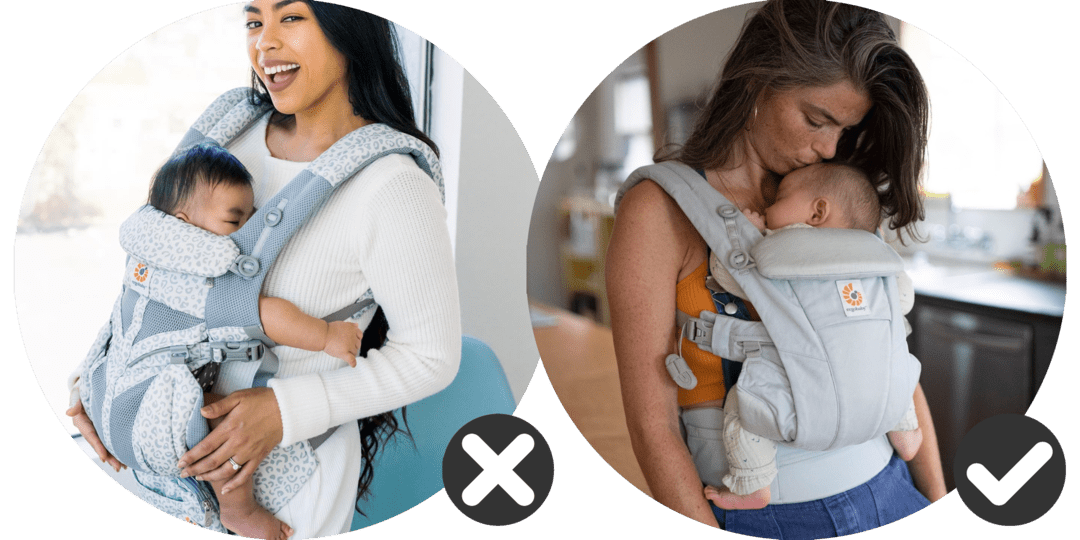
SSC (Soft Structured Carrier)
Left: The waistband is too low and dipping down in the front which is causing the baby to disappear into the carrier. Baby’s knees are low and not in a deep seated ‘M’ position and it’s spine is elongated and straight. The top of the carrier is coming up too high over baby’s neck, pressing baby into the wearer’s chest.
Right: The waistband is much higher and tucked between baby and wearer, with baby’s bum overhanging the waistband in a deep seated position. With baby’s knees higher than it’s bottom baby’s spine is supported in the curved position and the carrier comes to the nape of the neck offering good head support.
Baby Carrier Tutorials
If you can’t make it to our store for a carrier fitting, don’t worry! We’ve collated some helpful tutorials below to get you started. If you need additional assistance or cannot find the tutorial you need, please don’t hesitate to contact us. We want you get the most out of your baby carrier and want you to enjoy your babywearing journey.

Stretchy Wrap
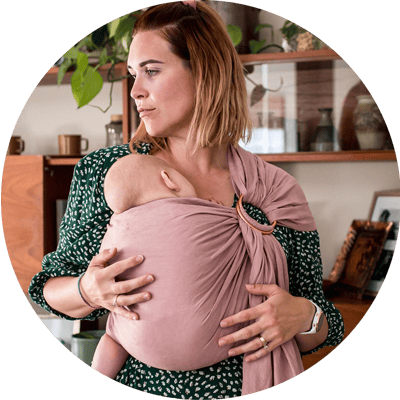
Ring Sling
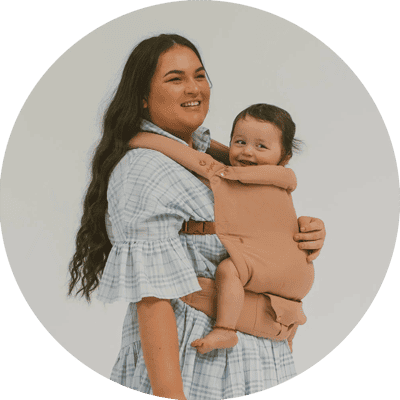
Chekoh Clip

Happy Baby
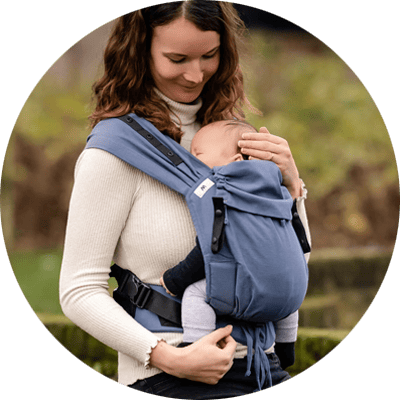
Hoppediz Primeo

Hoppediz Buckle
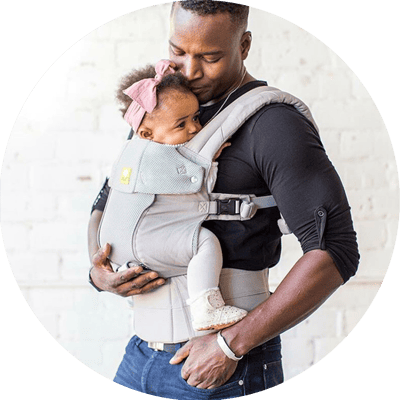
Lillebaby Airflow & All Seasons
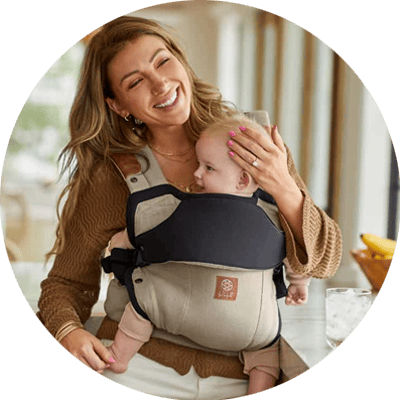
Lillebaby Elevate

